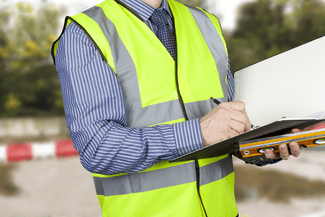Property Maintenance: 6 Items to Troubleshoot in Your Crawl Spaces

Because lists are always helpful, let’s start with a general list of what to focus on while performing an inspection of your crawl space (in no particular order):
No. 1- Ventilation
A lack of airflow is a problem for several reasons. Mold and other types of moisture damage can become much worse and spread faster without ventilation. This is especially true here in the Pacific Northwest.
No. 2 – Foundation Cracks
Cracks in the foundation can be very bad news (especially horizontal cracks), or not a big deal at all (vertical cracks). Horizontal cracks usually mean ground forces are causing the foundation to bow – not good. Vertical cracks are common and not a cause for concern. Vertical cracks are usually caused by precipitation putting pressure on the foundation, but stability remains.
No. 3 – Electrical
We recommend having an electrician come in to evaluate the situation. What you want to be wary of is any electrical wiring or equipment near moisture build-up. Knob and tube wiring is common in the Puget Sound region and it should be replaced or at least inspected somewhat regularly.
No. 4 – Mold
Per the Environmental Protection Agency, every type of mold can cause some health effects. Three types of mold typically occur in crawl spaces: black, white, and yellow. Mold can cause serious allergic reactions and should be dealt with as quickly as possible. Again, unfortunately in the Northwest, mold is common. Black mold (sometimes looking grey or greenish) is the most dangerous. White mold is still dangerous (often looking fuzzy) but not as bad as the black variety. Yellow mold occurs on organic material (wood) and can cause decay and destruction of the material it inhabits. Vapor barriers can be installed on your crawl space floor and up the walls to prevent mold.
No. 5 – Pests
Insects and little critters love these areas in a house. Termite damage is easy to spot and mice/rats/squirrels leave their droppings everywhere. It’s best to get ahead of these issues and they’re pretty easy to fix (call a pest-control company); doing so just requires some diligence and the occasional inspection.
No. 6 – Asbestos
Another really bad one, along with the black mold. With many, many houses in the Puget Sound region being built before 1980 (when asbestos was used frequently) this is a point of concern for homeowners. Asbestos can be in the walls, ceilings, floors – virtually anywhere in a crawl space. When this material is destroyed the toxic fibers go airborne and can seriously contaminate the air, possibly making a home unlivable. If you haven’t had a professional out to your house to check on this, please do!
In conclusion, crawl spaces can be a source of property maintenance headaches for a landlord. It’s best to have a look in this area at least a couple of times a year.
Source: Rental Housing Journal















 Accessibility
Accessibility